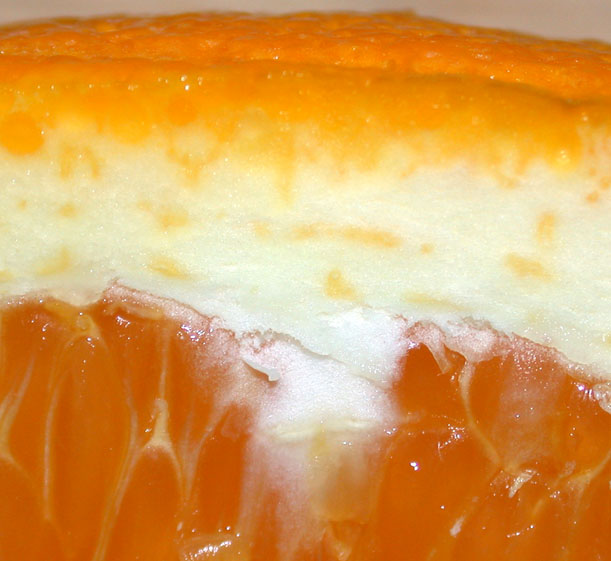Citrus Peel on:
[Wikipedia]
[Google]
[Amazon]
 Peel, also known as rind or skin, is the outer protective layer of a
Peel, also known as rind or skin, is the outer protective layer of a
 Peel, also known as rind or skin, is the outer protective layer of a
Peel, also known as rind or skin, is the outer protective layer of a fruit
In botany, a fruit is the seed-bearing structure in flowering plants (angiosperms) that is formed from the ovary after flowering.
Fruits are the means by which angiosperms disseminate their seeds. Edible fruits in particular have long propaga ...
or vegetable
Vegetables are edible parts of plants that are consumed by humans or other animals as food. This original meaning is still commonly used, and is applied to plants collectively to refer to all edible plant matter, including edible flower, flo ...
which can be peeled off. The rind is usually the botanical exocarp, but the term exocarp also includes the hard cases of nuts, which are not named peels since they are not peeled off by hand or peeler, but rather shells because of their hardness.
A fruit with a thick peel, such as a citrus
''Citrus'' is a genus of flowering trees and shrubs in the family Rutaceae. Plants in the genus produce citrus fruits, including important crops such as oranges, mandarins, lemons, grapefruits, pomelos, and limes.
''Citrus'' is nativ ...
fruit, is called a hesperidium. In hesperidia, the inner layer (also called '' albedo'' or, among non-botanists, ''pith'') is peeled off together with the outer layer (called flavedo), and together they are called the peel. The flavedo and albedo, respectively, are the exocarp and the mesocarp. The juicy layer inside the peel (containing the seeds) is the endocarp.
Uses
Depending on the thickness and taste, fruit peel is sometimes eaten as part of the fruit, such as withapple
An apple is a round, edible fruit produced by an apple tree (''Malus'' spp.). Fruit trees of the orchard or domestic apple (''Malus domestica''), the most widely grown in the genus, are agriculture, cultivated worldwide. The tree originated ...
s. In some cases the peel is unpleasant or inedible, in which case it is removed and discarded, such as with bananas or grapefruits.
The peel of some fruits—for example, pomegranates—is high in tannin
Tannins (or tannoids) are a class of astringent, polyphenolic biomolecules that bind to and Precipitation (chemistry), precipitate proteins and various other organic compounds including amino acids and alkaloids. The term ''tannin'' is widel ...
s and other polyphenol
Polyphenols () are a large family of naturally occurring phenols. They are abundant in plants and structurally diverse. Polyphenols include phenolic acids, flavonoids, tannic acid, and ellagitannin, some of which have been used historically as ...
s, and is employed in the production of dyes.
The peel of citrus fruit
''Citrus'' is a genus of flowering plant, flowering trees and shrubs in the family Rutaceae. Plants in the genus produce citrus fruits, including important crops such as Orange (fruit), oranges, Mandarin orange, mandarins, lemons, grapefruits, ...
s is bitter and generally not eaten raw, but may be used in cooking. In gastronomy, the outermost, colored part of the peel is called the zest, which can be scraped off and used for its tangy flavor. A large piece of citrus peel, called a " twist", is often used to garnish cocktail
A cocktail is a mixed drink, usually alcoholic beverage, alcoholic. Most commonly, a cocktail is a combination of one or more liquor, spirits mixed with other ingredients, such as juices, flavored syrups, tonic water, Shrub (drink), shrubs, and ...
s. The fleshy white part of the peel, bitter when raw in most species, is used as succade or is prepared with sugar
Sugar is the generic name for sweet-tasting, soluble carbohydrates, many of which are used in food. Simple sugars, also called monosaccharides, include glucose
Glucose is a sugar with the Chemical formula#Molecular formula, molecul ...
to make marmalade or fruit soup. The peel can also be candied, or dried to produce a seasoning (e.g., chenpi).
Nutrition
In a 100 gram reference amount, raw orange peel supplies 97calorie
The calorie is a unit of energy that originated from the caloric theory of heat. The large calorie, food calorie, dietary calorie, kilocalorie, or kilogram calorie is defined as the amount of heat needed to raise the temperature of one liter o ...
s, with dietary fiber
Dietary fiber (fibre in English in the Commonwealth of Nations, Commonwealth English) or roughage is the portion of plant-derived food that cannot be completely broken down by human digestive enzymes. Dietary fibers are diverse in chemical co ...
and vitamin C
Vitamin C (also known as ascorbic acid and ascorbate) is a water-soluble vitamin found in citrus and other fruits, berries and vegetables. It is also a generic prescription medication and in some countries is sold as a non-prescription di ...
in rich content having 42% and 227% of the Daily Value (DV), respectively. Calcium content is 16% of the DV, with no other micronutrients in significant amounts. A serving of raw orange peel provides 63% DV for vitamin C and 12% DV for dietary fiber.
See also
* Banana peel * Biorefinery: conversion of citrus peel to succinic acid *Fruit anatomy
Fruits are the mature ovary (plants), ovary or ovaries of one or more flowers. They are found in three main anatomical categories: aggregate fruits, multiple fruits, and simple fruits.
Fruitlike structures may develop directly from the seed it ...
, describing the botanical terms of fruit and skin layers
* Peeler
* Zest (ingredient)
References
{{reflist Fruit